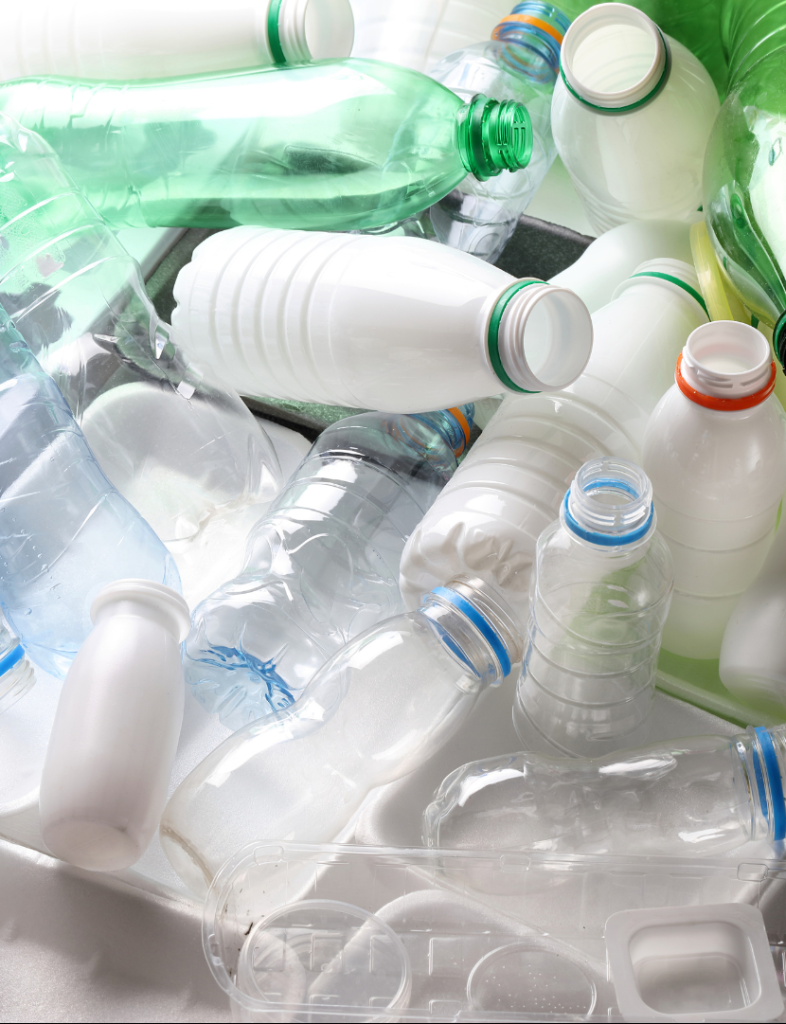
Plastic packaging
Plastic revolutionised the packaging sector by extending the shelf life of fresh food, enabling essential health applications, contributing to lighter and safer shipping, and reducing emissions.
Its success as a packaging material comes from a combination of flexibility, strength, lightness, stability, impermeability and ease of sterilisation, among others. And as technology drives advances in innovation, plastic packaging is becoming more circular.

Food conservation and preservation
Plastic packaging is essential in the food supply chain as it reduces food waste and ensures product quality. From protecting fresh produce to preserving its taste and nutritional value, its versatility is unmatched. Lightweight bottles for drinks, trays for fruit, vegetables, and meats, and tubs for dairy spreads and ice creams are all good examples.
In parallel, the rise of reusable containers signals a dynamic industry responding to sustainability demands. In many instances, reusing and refilling product applications are effective ways of saving resources and improving the environmental footprint of our lifestyles.

Safe and hygienic plastics for healthcare
Plastic packaging protects against contaminants such as germs along the supply chain from manufacture, distribution, and storage to use in a healthcare environment. Tamper-proof closures provide additional protection and security and maintain the safety and integrity of sterile goods.

Convenient and innovative
People want packaging with clear identification and labelling, which is easy to open and use. Plastic packaging is evolving to solve that issue. Soon, innovations like printable RFID (radio-frequency identification) chips on packaging will be able to provide important information on the quality and status of products or how to recycle.
Another approach called HolyGrail uses digital watermarks on packaging that contain details specific to that product. Imperceptible to the naked eye, the watermarks are picked up by a high-resolution camera during the sorting process. Based on the packaging attributes, e.g. food or non-food, or material used, it is sorted more effectively, and higher recycling rates can be achieved.

Lightweight packaging for better logistics
Specially designed plastic packaging for transport plays a vital role in helping to move products through the supply chain efficiently. From protective wrappings to reusable boxes, packaging helps to secure the goods during transportation so they arrive safely and undamaged.
The increasing adoption of light weighting – where the amount of materials used in packaging is reduced – means lighter loads and fewer lorries are needed to ship the same number of products. This approach helps reduce fuel for transportation, decrease emissions, and lower shipping costs.
Packaging waste
While many plastics are collected, sorted and recycled, there is still much to do in this area. A holistic approach is still needed to stop plastics pollution. One built on sustainable plastic production and consumption with waste prevention, reuse, reduction and repair, and the development of a circular economy.
The European Commission’s Packaging and Packaging Waste Regulation (PPWR) proposal could serve as a catalyst to transform the plastics packaging industry. Steps such as ensuring the recyclability of all plastics packaging, increasing the uptake of circular plastics and kick-starting reuse in many packaging applications will be essential.

Recycled content targets for contact-sensitive plastic packaging will require a significant contribution from chemical recycling, which is a key building block of the circular economy.
VIRGINIA JANSSENS – Managing Director of Plastics Europe
Global Plastics Treaty
The Global Plastics Treaty has highlighted the urgency for a circular plastics economy – one that incorporates a whole life cycle approach. From initial design to distribution, a circular economy of plastics can be defined as a system in which all plastic applications are reused, recycled, and responsibly managed during and after use, lowering greenhouse gas emissions.
